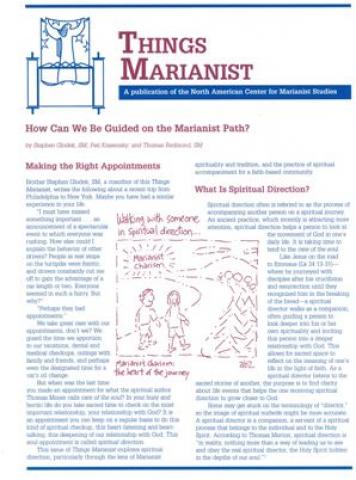4 pgs.
The rich gift of the Marianist charism was born in the aftermath of an historic turmoil, the French Revolution. Still today its timeless message draws people to a deeper life in Christ. A new issue in our popular Things Marianist series explores the underpinning of its relevance today: prayer and partnership in prayer.
This new Things Marianist—“How Can We Be Guided on the Marianist Path?”—examines Blessed Chaminade’s method of prayer both from the perspective of an individual journeying with a companion (spiritual direction) and a communitarian perspective (spiritual accompaniment of a community).
Coauthors Stephen Glodek, SM; Pati Krasensky; and Thomas Redmond, SM; trace the origins of Blessed Chaminade’s method, examine his own life for clues of prayerful witness, and provide a case study of how he used it with his fellow Marianists. The bottom line for Chaminade, as it is for Marianists today, is that “Spiritual direction of both individuals and communities is the means by which that progressive and gradual conformity with Jesus Christ takes deeper root, develops holistically, and flowers in each time and place.”(1)
Are you looking for a way to use a Things Marianist for a community meeting or discussion group? We have the answer for you, and it is free. A complimentary issue of Talking Points (an electronic resource containing prayer, scripture, and reflection questions) related to the issue of Things Marianist you have purchased is available upon request (nacms@udayton.edu).
[1] Stephen Glodek, SM; Pati Krasensky, and Thomas Redmond, SM; Things Marianist, “How Can We Be Guided on the Marianist Path?” (Dayton, OH: NACMS, 2014), p. 4.

